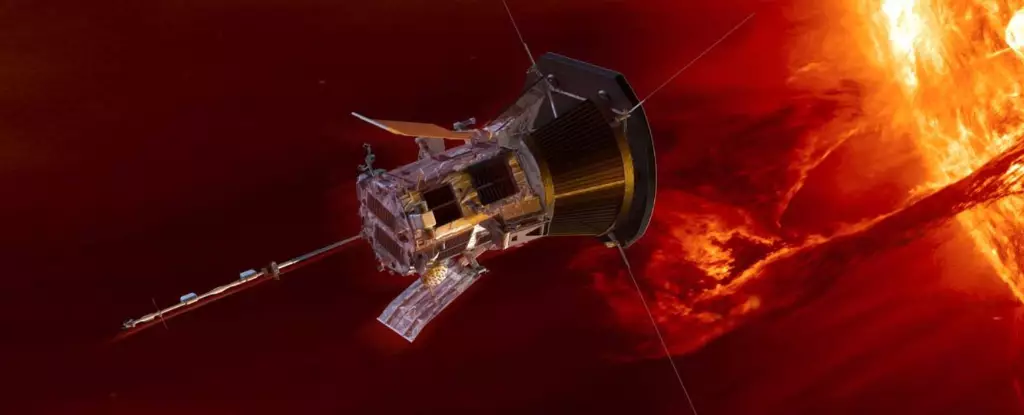NASA’s Parker Solar Probe stands as one of the most ambitious endeavors in space exploration, aiming to unravel the secrets of the Sun. On a historic day, it made headlines by becoming the first spacecraft to approach our star at an unprecedented distance, showcasing humanity’s relentless quest for knowledge. Launched in August 2018, the probe is not merely a testament to engineering excellence; it serves a vital purpose in enhancing our understanding of solar dynamics and the potential impacts on Earth’s environment.
In a moment that will echo through the annals of scientific history, the Parker Solar Probe flew within a mere 3.8 million miles (approximately 6.1 million kilometers) of the Sun. To put this staggering achievement into perspective, if the distance from the Earth to the Sun were scaled down to the length of an American football field, Parker would be just about four yards from the end zone during its closest approach, a phase known as perihelion. This provocation of the solar frontier pushes the boundaries of previous records and exemplifies NASA’s capability to tackle ambitious projects.
Nicky Fox, a prominent figure at NASA, highlighted the significance of this moment, stating, “Right now, Parker Solar Probe is flying closer to a star than anything has ever been before.” Such statements not only reflect excitement but also underscore the innovative spirit that defines modern space exploration.
One of the most remarkable aspects of the Parker Solar Probe’s journey is its ability to withstand extreme conditions. As it approaches the Sun’s radiation, temperatures soar above 1,700 degrees Fahrenheit (930 degrees Celsius). Yet, thanks to its cutting-edge heat shield, the probe’s internal components remain nearly at room temperature, around 85 °F (29 °C). This extraordinary feat showcases the transformative technology that allows scientists to collect data from regions previously deemed too hostile for instruments.
Equipped with these advanced thermal protection systems, the Parker Solar Probe embarks on a journey not merely to survive but to actively gather data on the solar corona – the outer atmosphere of the Sun. This area presents intriguing questions, such as the origin of solar wind and the reasons behind the paradox of the corona being hotter than the Sun’s surface.
Data-Driven Insights Await
The fruits of this groundbreaking mission are expected to yield invaluable scientific insights. Over the course of its seven-year mission, the Parker Solar Probe will conduct multiple close flybys, gathering and transmitting data that will help demystify some of the Sun’s most enigmatic phenomena. Researchers eagerly anticipate the first updates from the probe, which will be critical in addressing long-held questions regarding solar behavior and its ramifications on space weather—phenomena that can potentially disrupt technologies and life on Earth.
Arik Posner, the program scientist, emphasized the significance of this mission by stating, “This is one example of NASA’s bold missions, doing something that no one else has ever done before.” The excitement is palpable within the scientific community as anticipation builds for the return of data that could provide clarity on the complex relationships within the solar system.
The December flyby marks just the beginning of a series of close encounters. Parker Solar Probe is scheduled for additional close approaches within the Sun’s atmosphere on March 22 and June 19, 2025. Each pass is expected to yield more extensive data and further push the boundaries of our understanding of solar phenomena.
As the probe embarks on its exploration, it carries with it the hopes and aspirations of countless scientists and space enthusiasts. The quest to better understand our solar system’s dynamics is ongoing, and the Parker Solar Probe is paving the way for future explorations.
The historic flyby of the Parker Solar Probe serves as a testament to human ingenuity and the insatiable thirst for knowledge. Positioned at the threshold of unprecedented exploration, this mission promises to unravel mysteries that have perplexed scientists for centuries. As we await the data and insights, one thing remains clear: we are on the cusp of something extraordinary, and the universe holds secrets just waiting to be uncovered.

